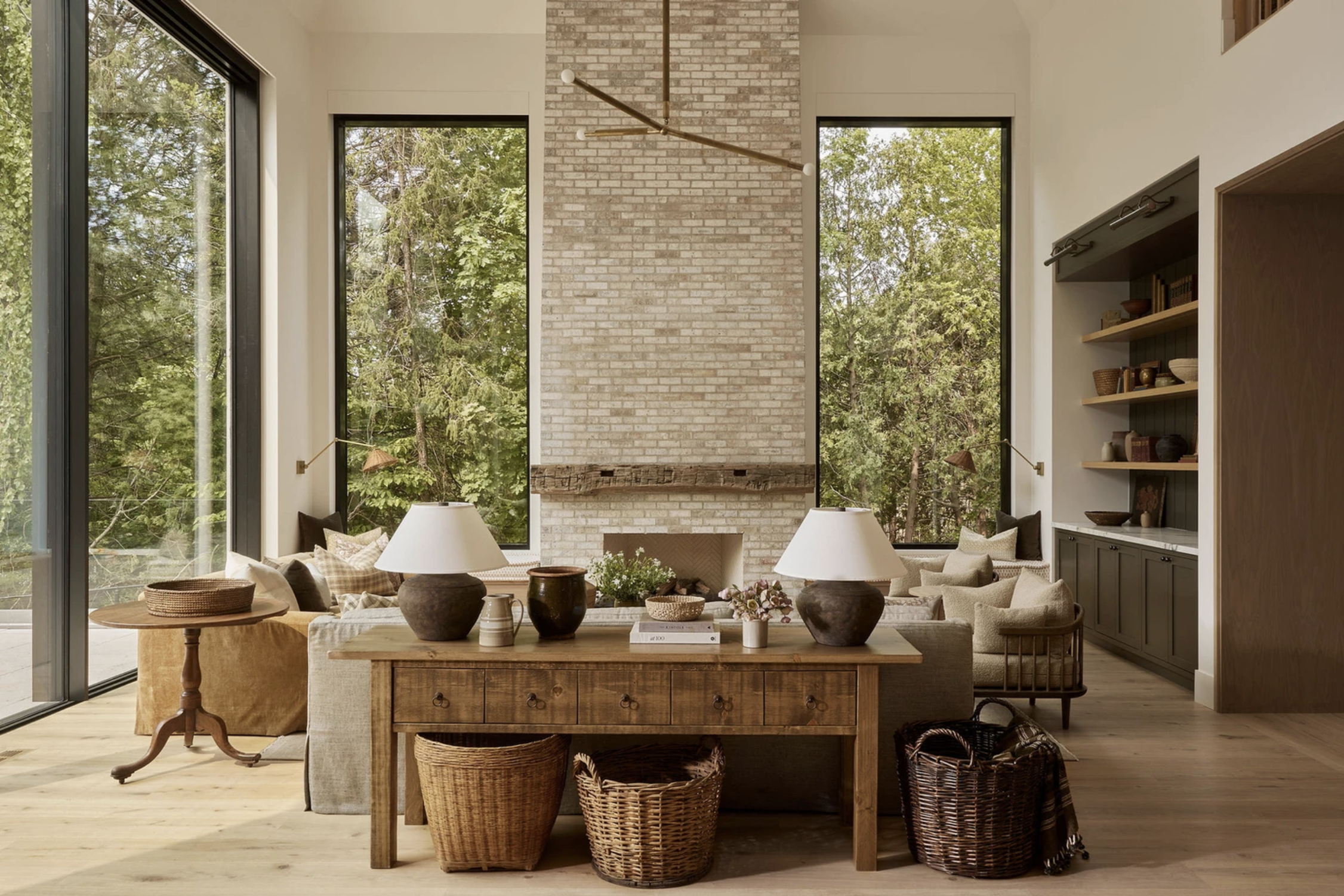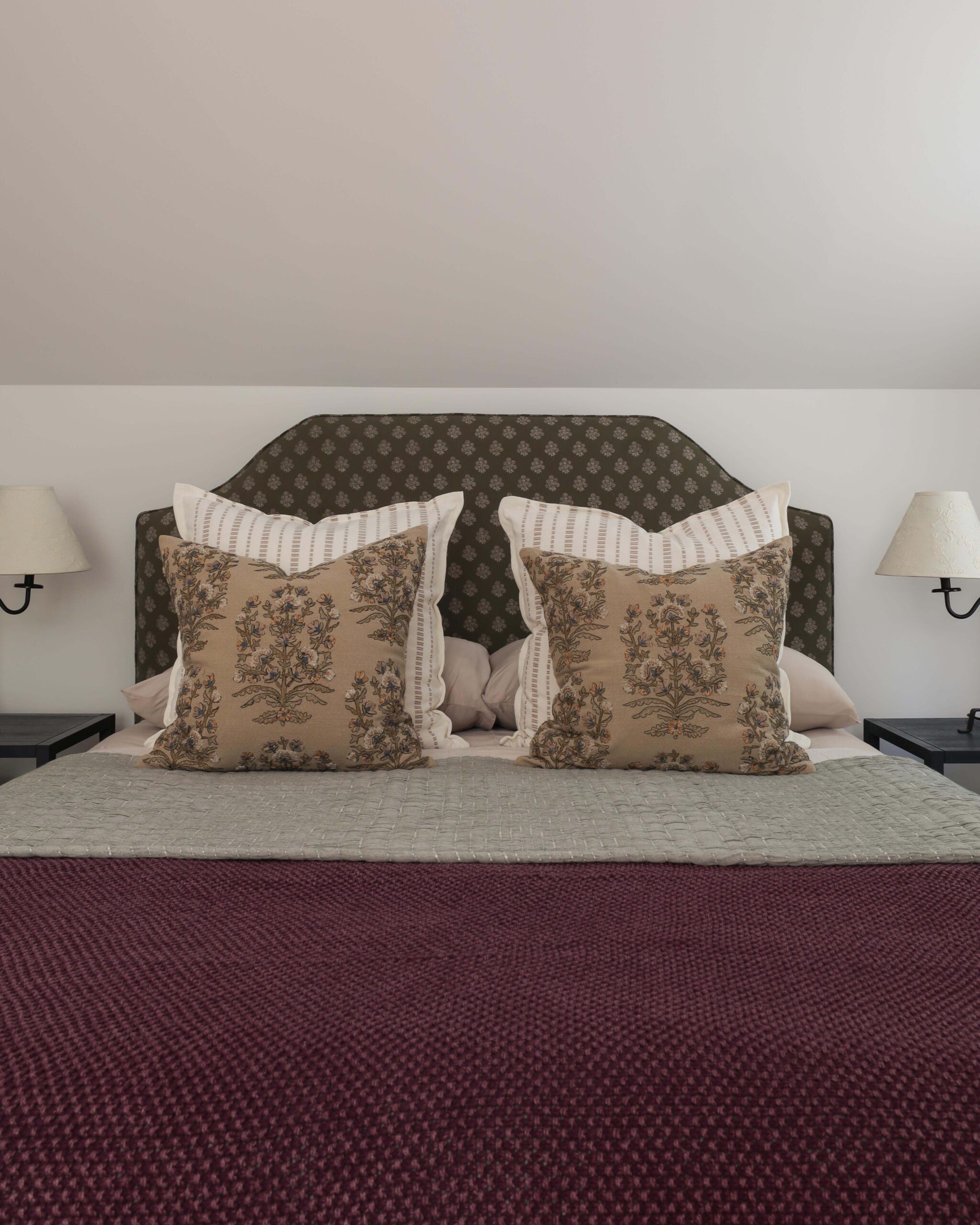This post contains affiliate links.
Dear danica,
I want a table lamp and a floor lamp in the same room. Should the style and materials match?
– Janaina

I had an immediate answer in my head when I read your question, but after giving it more thought I had to back track a bit. So let’s talk about when to match lamps, and when not to.
When To Match Lamps
I would like to preface this by saying that these are my personal opinions. There are no hard and fast rules on this matter and some may prefer a different method than mine, which I fully support. When it comes to my home and my designs, these are the rules that I follow when selecting multiple lamps for one room.
USE MATCHING LAMPS ON EITHER SIDE OF THE BED
There are some rooms where symmetry almost feels like a necessity to me. A set of identical lamps (or sconces) on a pair of matching nightstands is my formula for every bedroom. But that is where the matching ends. Any additional lamps in the bedroom have a different shape, shade, and color.
For example, in our bedroom I have two tall black candlestick lamp bases on our nightstands and a short and round ivory lamp on our dresser. If I were to add a floor lamp, I’d probably pick an aged metal – chrome, brass, or bronze. Having multiple styles in one room is what draws your eyes from one side of the room to the next.
USE MATCHING LAMPS ON SIDEBOARDS
Another area that often features matching lamps is on a sideboard or buffet. The combination of the sideboard paired with identical lamps on each end creates a picturesque unit. Your eyes are drawn to this “scene” and they stop there which makes it a great place to highlight something you want people to soak in – art, a mirror, a window. If you place two lamps on a sideboard, I prefer that they match.
In my own home I usually go the asymmetrical route. I often place a lamp on one end and a large mirror or framed art on the other end to balance the visual weight. The asymmetry allows the eyes to wander through the scene and when you come to the end, it encourages you to explore the rest of the room.

SELECT MATCHING LAMPS WHEN SYMMETRY IS DESIRED
Think of symmetry as a picture frame. The frame is simply the object that holds what you’re meant to the look at – the artwork. Sure, the picture frame can be stunning in itself, but it’s used to outline the artwork.
Now think of the artwork as a focal point in your home. This focal point could be a fireplace in the living room flanked by windows on either side. This is where your eyes are naturally drawn to and the architecture is symmetrical. This would be a great place to continue the symmetry by adding a pair of matching lamps on either side of the fireplace. The lamps and windows become the frame, and the fireplace becomes the artwork that you are most drawn to.
On the other hand, in this living room scenario you could also shy away from the symmetry to break up the visual flow of the room. A brown table lamp on one side and a black floor lamp with an empire shade on the other makes the room less predictable.
Both options are good. The look that you want determines the choice that you make.

When NOT To Match Lamps
Of course all homes, rooms, and scenarios are different, but I usually mismatch lamps.
USE MISMATCHED LAMPS IN MOST SCENARIOS
In most cases, I prefer to mismatch lamps within the same room. It adds a layer of interest. And as I said above, it makes the room less predictable.
When pairing multiple lamps in one room, pick lamps with different colors, shapes, shades, materials, and textures.
Pair long and skinny bases with short and stout. Pair smooth and modern with texture and patina. Pair empire shades with drum shades. Pair black with ivory. Pair iron with ceramic or brass with rattan. There are so many combinations you can play around with…and the key here is play. Because it’s bound to take 2 or 3 tries before it feels right.
Lamp Pairings I Love

Leave a Reply Cancel reply
DO YOU WANT
The Inside Scoop
Where behind the scenes, exclusive advice, and candid conversations are sent straight to your inbox every week.



Ugh – your first comment caused me to stop and wonder about possibility. I have had two different night tables in my bedroom for years and it has worked. But I just changed to two of the same.I have a lamp I like on one had none on the other and it was okay. I added a little night light with a shade to the empty one and it does not work, Out of balance. I thought I would add an interesting black base to give it some heft and a beige shade. , or a small tiffany like lamp, Or maybe a totally beige lamp. Night tables are black with marble top. Lamp I have is ginger like shape black with Beige shade. The same seems too symetrical to me and I would have to replace the lamp I like with another because it is not new and I wouldn’t be able to get it even if I wanted to. Suggestions?
I didn’t see anything about how to match or mismatch lamps on either side of a standard size living room couch. Otherwise your article was interesting. Susan